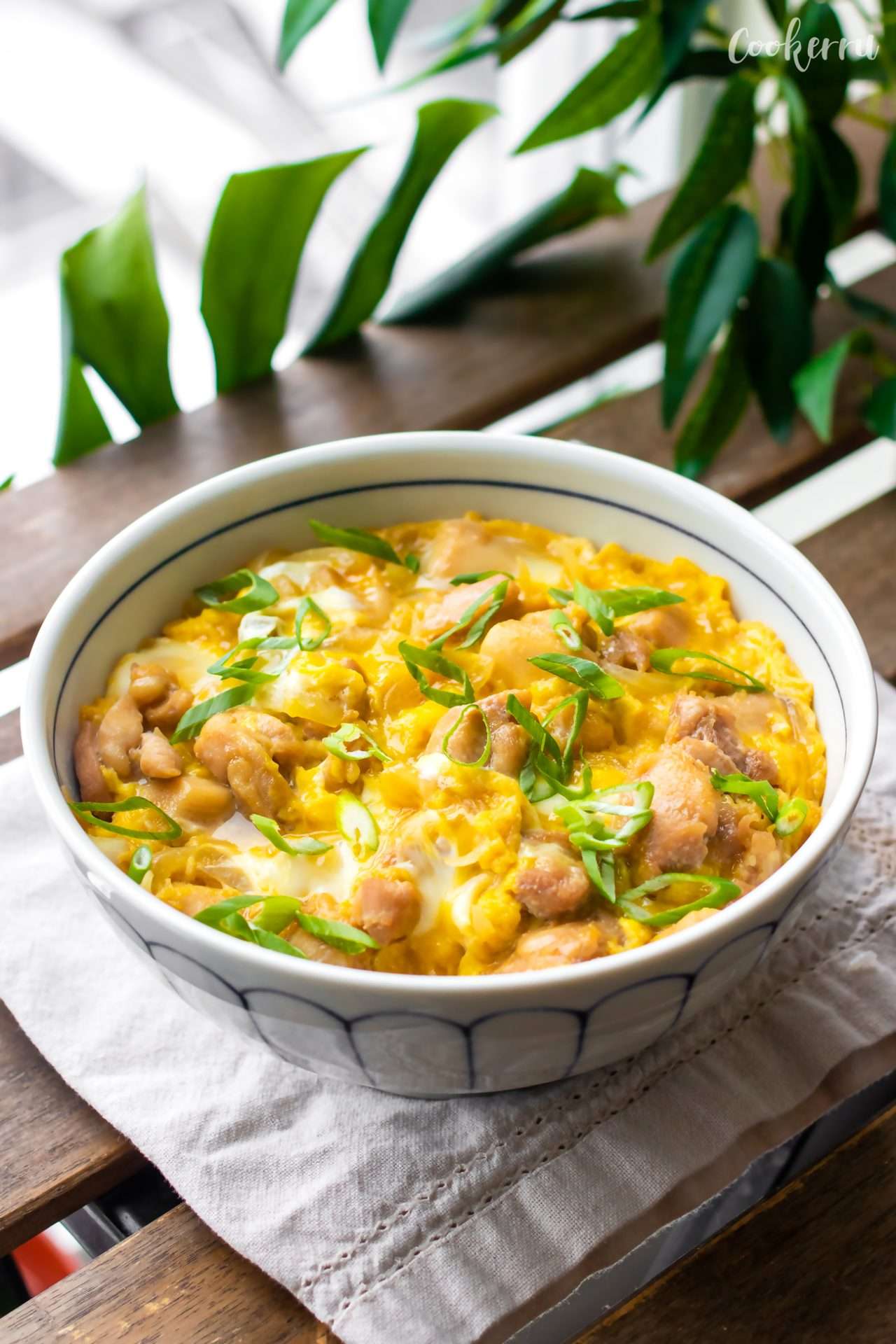Oyakodon: The Authentic Japanese Chicken and Egg Rice Bowl Recipe and Variations
Oyakodon traces its origins to the Meiji era in Japan, which spanned from 1868 to 1912. The dish emerged as a popular form of “donburi,” or bowl meals, which are simple yet fulfilling. According to food historians, the first known recipe appeared in cookbooks during the late 1800s. Restaurants began serving Oyakodon soon after, combining efficiency and taste for busy urban residents.
Cultural Significance
Oyakodon holds a special place in Japanese cuisine due to its symbolic meaning. “Oya” means parent, and “ko” means child, referring to the chicken and egg relationship. This dish represents familial bonds and is often enjoyed during family gatherings, reinforcing connections. Additionally, Oyakodon exemplifies the Japanese ethos of balance and harmony in culinary tradition, combining protein and carbohydrate seamlessly in a single bowl.
Key Ingredients of Oyakodon
Chicken Selection and Preparation
Choosing the right chicken ensures Oyakodon’s signature flavor. Use boneless, skinless chicken thighs for their tenderness and juiciness. Slice them into bite-sized pieces. Marinate the chicken in a mix of soy sauce, mirin, and sake for 15–20 minutes to infuse flavors and tenderize the meat. This preparation step helps the chicken absorb the condiments better while cooking, resulting in a rich taste.
Egg Consistency and Flavor
Eggs provide the creamy texture that defines Oyakodon. Lightly beat the eggs but avoid over-mixing to retain some whites and yolks’ distinctiveness. This creates a varied texture in the finished dish. Pour the eggs over the simmering chicken in the dashi-based broth. Cover and cook on low heat until the eggs are soft and slightly runny. This method ensures the eggs meld with the chicken, enhancing the dish’s overall flavor profile.
The Role of Rice in Oyakodon
Using properly cooked rice as the base elevates Oyakodon. Opt for short-grain Japanese rice, known for its stickiness and ability to absorb flavors. Rinse the rice under cold water multiple times until the water runs clear to remove excess starch. Cook the rice so it’s fluffy and slightly sticky. Ladle the chicken and egg mixture over a steaming bowl of rice. The rice serves as a neutral yet integral component, balancing the savory toppings.
Step-by-Step Cooking Guide for Oyakodon
Preparing the Chicken and Onion
Begin by slicing 300 grams of boneless, skinless chicken thighs into bite-sized pieces. Marinate the chicken in a mixture of 2 tablespoons of soy sauce, 2 tablespoons of mirin, and 1 tablespoon of sake for 15 minutes. Meanwhile, thinly slice one medium-sized onion. In a pan over medium heat, combine the marinated chicken and onion with 1 cup of dashi stock. Cook until the chicken turns opaque and the onions soften, approximately 5-7 minutes.
Mixing the Eggs and Cooking Techniques
Crack four large eggs into a bowl and gently beat them. The goal is to slightly mix the whites and yolks without making them completely uniform. When the chicken and onion are ready, pour half the beaten eggs evenly over the entire pan. Cover the pan with a lid and let the eggs cook for 1-2 minutes, ensuring they remain slightly runny. Pour the remaining eggs, cover again, and cook for another 1-2 minutes or until the eggs reach the desired consistency.
Assembling the Bowl
Prepare two bowls of cooked short-grain Japanese rice. Spoon the chicken, onion, and egg mixture evenly over the rice in each bowl. Garnish with chopped scallions and a sprinkle of shichimi togarashi, if desired. Serve immediately to enjoy the Oyakodon while it’s fresh and warm.
Nutritional Value of Oyakodon
Health Benefits
Oyakodon offers several health benefits due to its balanced ingredients. Chicken thighs provide a high-quality protein source, which is essential for muscle repair and growth. Eggs contribute additional protein and supply essential vitamins such as B12 and D, which are important for energy production and bone health. The short-grain rice delivers a moderate amount of carbohydrates, offering a quick energy source. Additionally, onions in the dish contain antioxidants that help reduce inflammation and boost the immune system.
Dietary Considerations
Oyakodon can fit into various dietary plans, but constraint considerations depend on specific needs. For those monitoring calorie intake, be mindful that Oyakodon contains moderate calories. Substituting chicken thighs with chicken breasts can reduce fat content. Those on a low-sodium diet should use low-sodium soy sauce to control sodium levels. People with egg allergies can replace eggs with tofu, ensuring they still get a protein boost. Lastly, if you’re following a gluten-free diet, opt for gluten-free soy sauce to keep the dish suitable.
Variations of Oyakodon Across Regions
Traditional Vs. Modern Twists
Traditional Oyakodon uses chicken thighs, eggs, onions, and dashi-based sauce over rice. Its simplicity preserves the authentic, savory flavors of Japanese cuisine. Regions in Japan have their specific takes on the dish, sometimes varying the ingredients.
Modern twisted versions introduce new elements while maintaining the core theme. You may find oyakodon with added vegetables like carrots or mushrooms for extra nutrients. Some eateries offer versions with alternative proteins like tofu for vegetarians. Other variations include using different broths like miso instead of the traditional dashi to create unique flavor profiles.
- Kanto Style: This style, prevalent in Eastern Japan, highlights a slightly sweeter sauce. The use of mirin and more sugar differentiates it from others.
- Kansai Style: Found in Western Japan, this variation leans towards a milder, less sweet flavor. It emphasizes dashi, combining it with soy sauce for a savory taste.
- Okinawa Style: Okinawan Oyakodon uses local ingredients like pork instead of chicken. This reflects the island’s distinct culinary culture.
- Hokkaido Style: In Hokkaido, you might find Oyako-don garnished with seafood like salmon roe. It showcases Hokkaido’s rich maritime resources.
These regional varieties show how Oyakodon can adapt to local tastes and available ingredients, offering unique dining experiences across Japan.
Conclusion
Exploring Oyakodon offers a flavorful journey into Japanese culinary traditions. This comforting dish exemplifies the harmonious blend of simple ingredients to create something truly special. Whether you stick to the classic recipe or experiment with regional variations, Oyakodon is a versatile meal that can fit any palate. Dive into the world of Oyakodon and experience the rich cultural tapestry of Japan one bowl at a time.






